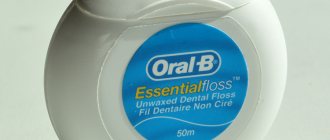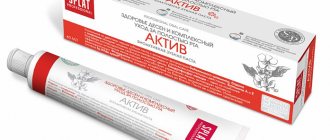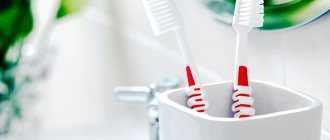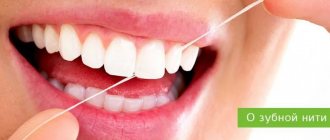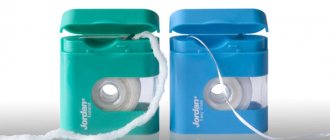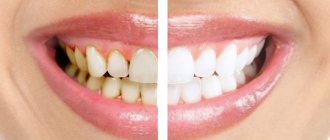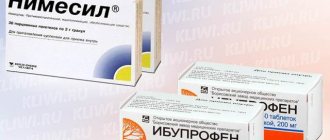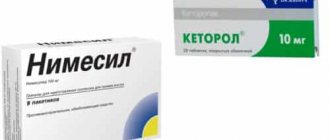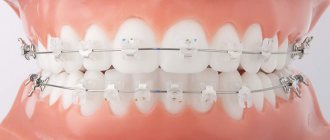When cleaning your mouth, you need to use not only a toothbrush, but also dental floss and toothpicks. Waxed and unwaxed dental floss help clean the hardest to reach areas. There are two types of dental floss: waxed and unwaxed. In this article we will look at how effective dental floss is and which one is better to choose.
First of all, dental floss is an effective means of cleaning food and plaque from your mouth. It allows you to clean places that are inaccessible to a toothbrush and even toothpicks, namely the space between the teeth. There are different types of dental floss, some of them are scented. This was done in order to replace the not very healthy thing that people are used to using after eating - mint chewing gum.
Waxed and unwaxed dental floss: what's the difference?
Before purchasing dental floss, you need to familiarize yourself with their types:
- Waxed dental floss is coated with wax for better glide between teeth and to reduce pain or simply unpleasant sensations that arise during the process of cleaning the oral cavity. This floss is suitable for people with no gaps between their teeth, for those whose teeth are close to each other.
- Unwaxed dental floss is not coated with wax, so it cleans between teeth much better. This allows it to be more economical and useful to use. It is ideal for people with loose teeth. This thread is stratified into several layers of hairs, which more effectively remove pieces of food.
In addition, dental floss can be round or flat. The round one is suitable for people with wide interdental openings, and the flat one is for those who have narrow or almost absent openings. There are also so-called “superfluxes”, they have both round and flat areas. This allows you to regulate the process of cleaning the interdental space. Such threads are more difficult to find than regular ones, and they cost much more. But there are much more benefits and convenience from them.
Scope of application
Dental floss is a useful replacement for a toothpick. If a wooden stick often gets stuck, leaves splinters and even injures the enamel, then floss is recommended by dentists as an effective and safe method of hygiene. They need to be treated before bed to prevent bacteria from having a nightly feast and ruining your smile. If during the day we have a lot of reasons and opportunities to erase plaque, then at night no one does this. Therefore, it is better to floss once a day before bed.
Floss performs several important functions:
- Prevention of tartar formation;
- Cleaning interdental areas and preventing caries;
- Disinfection of interdental areas and prevention of gum inflammation (this is achieved with the help of antiseptic impregnations);
An alternative to dental floss can be an irrigator, but it is significantly more expensive.
Pros and cons of using dental floss
Waxed and unwaxed dental floss, like everything else, has both positive and negative sides. Undoubtedly, there are still more advantages, but it is worth paying attention to the disadvantages of using dental floss.
The positive aspects are the ability to clean the tooth surface at any time, this is especially useful when it is not possible to use a toothbrush and toothpaste. In addition, dental floss can penetrate into places where a toothbrush and toothpicks cannot reach - into the interdental space. To use floss you don't need any rules or special skills, it's easy to use, and the small box can fit anywhere - from a pocket to a wallet. You can buy dental floss at almost any pharmacy. It is better to use floss after eating, when there is a high probability of food debris accumulating between the teeth.
Now it’s worth noting the negative aspects of using dental floss. First of all, there is always a risk of damaging the gums with an awkward movement, which will cause bleeding and the risk of inflammation or infection. And flossing too often can damage or destroy tooth enamel. This can lead to a number of problems, such as tooth decay. In addition, when using waxed thread, you may develop an allergy to its constituent components, primarily wax.
The thread itself cannot cause any harm; the cause of gum injuries usually lies in careless use of the thread: too sharp jerks or strong pressure. Also, don't floss too often.
Which is better?
Many people ask themselves, “Which dental floss is better: waxed or unwaxed?” This is not a completely correct question, because the selection of floss should be done by a specialist who can assess the “patency” of your interdental spaces and determine the best option. Moreover, in his office you must make sure there are no contraindications. Dental floss can also be harmful if a person is not prepared to use it.
Obviously, you need to start with waxed thread - it is less difficult to use, more pleasant to the touch and gives “consolation prizes” to beginners - tasty impregnations. But unwaxed brushes your teeth better, but requires certain skills and remarkable caution from you. If you do not learn how to handle it correctly, the transition can have a detrimental effect on the health of your gums. There will be no end to the cuts, as well as the negativity towards the whole procedure as a whole.
If you want to learn more about modern oral hygiene, check out our review of the latest gadgets for more effective teeth cleaning. Maybe that's where you'll find a more suitable option.
Tags: waxed floss, dental floss, unwaxed floss, review, floss
About the author: DrZubastik
- Related Posts
- What determines the color of teeth and what shades there are on the Vita scale
- What not to do after tooth extraction: 10 anti-tips
- Have your teeth whitened? Let's follow the white diet!
« Previous entry
Waxed and unwaxed dental floss: which is better?
When choosing dental floss, it is worth remembering the wax content of waxed floss. Despite its low wax content, it may not be suitable for people who are allergic to it. In addition, waxed floss is treated not only with wax, but also with other special sliding substances that give teeth a pleasant minty smell or improve the quality of tooth enamel.
Also, when choosing a thread, you need to pay attention to the quality of the product, the strength and quality of the packaging. Then you should pay attention to the manufacturer and, if desired, study reviews on the Internet. This will help you choose the best and most proven option.
At the same time, it is worth paying attention to the materials from which the thread is made. It is best to choose a thread that uses natural materials: silk thread and real wax. This material, among other things, is also very strong. However, this option is not suitable for allergy sufferers, since natural ingredients can provoke an attack of the disease. In this case, it is better to pay attention to dental floss made of nylon or nylon.
How to choose the right floss
The choice of accessories for oral hygiene procedures depends on many factors. Hygiene products are produced by different manufacturers. Waxed dental floss differs from unwaxed floss in that the latter cleans better. The difference also lies in the degree of security. To make the right choice, you should take into account the condition of the masticatory organs. You can try using several types of floss and choose a convenient accessory. Things to take into account:
- If the units do not grow closely and the gums do not hurt, it is better to choose unwaxed floss, which has a round cross-section.
- The client must decide on the type of impregnation himself.
- If there is a shortage of space in a row or inflamed gum tissue, it will be safer to use tapes with bactericidal impregnation. Tight spaces can be cleaned with waxed floss as it glides freely. This eliminates injury.
- When the enamel is weakened and signs of caries are diagnosed, it is useful to use fibers soaked in fluoride.
- For frequent trips, floss, which is measured in portions, is suitable. It must be tucked into a special holder.
- Volumetric accessories that swell are recommended for exposed necks and roots.
For those patients who use orthopedic structures, superflosses with sections of different diameters are prescribed. The fibers must be resistant to tearing and have a refreshing taste.
Flossing
In fact, there are no special rules for using dental floss, however, there is a list of tips and tricks.
First of all, it is necessary to use dental floss after each meal to more effectively clean the mouth. This must be done extremely carefully so as not to damage the gums and tooth enamel. If traces of blood appear on the surface of the thread, the procedure must be stopped. It is also necessary to stop if painful sensations occur. Sequence of brushing teeth with dental floss:
- To begin with, you should unwind a small piece of dental floss about four to five centimeters long. This length is the most optimal for holding the thread tightly and sliding well over the surface of the teeth.
- Next, you need to wrap the ends of the thread around your index fingers so that the thread does not fall off, but does not pinch them too tightly. The thread must be tensioned.
- Lightly, without sudden movements, you need to press on the area between the teeth so that the thread goes in all the way. Cleaning should be done with the same light, “sawing” movements.
Characteristics of wax-impregnated products
Among the good qualities of this type of product are:
- Since the tool is equipped with a thin layer of wax, it is smooth and the sliding ability is increased.
- The product easily penetrates into tight spaces.
- It does not delaminate during cleaning, is highly durable, and has a service life of five years or more.
- Easy and convenient to use.
- Minimal risk of accidental injury to the soft tissues of the oral cavity.
- It has the ability to easily glide over the surface of the tooth, due to this it can be used even by people who have not previously had experience in flossing.
- Suitable for cleaning teeth with many fillings, for caring for dentures, crowns, bridges.
- Beeswax is an excellent prophylactic agent that prevents the formation of tartar and plaque. Also, this beekeeping product has a pronounced wound-healing and antiseptic effect.
There are also certain disadvantages of such a device:
- resistance to fiber separation and weak friction force negatively affect the cleaning characteristics of this type of device;
- in order to remove plaque and food debris as effectively as possible, re-use of the accessory is often required, and this may mean a risk of injury to the gums if used carelessly;
- After the hygiene procedure, wax particles may remain on the teeth, so you will need to additionally clean the oral cavity.
The listed problems are rare; the cause of these shortcomings is often the use of low-quality or expired products.
Preparing the bear for the procedure
Take cling film and wrap the entire bear.
Using your fingers, carefully dig out the hole for the nose. We tear the film and stretch it to fit the size of the nose. We fix it in an extended position with the help of an elegant scarf.
